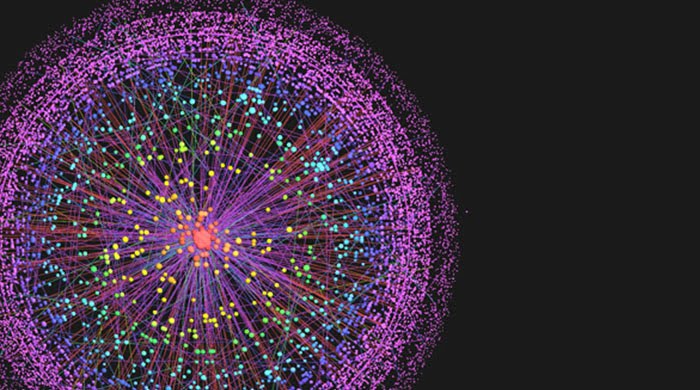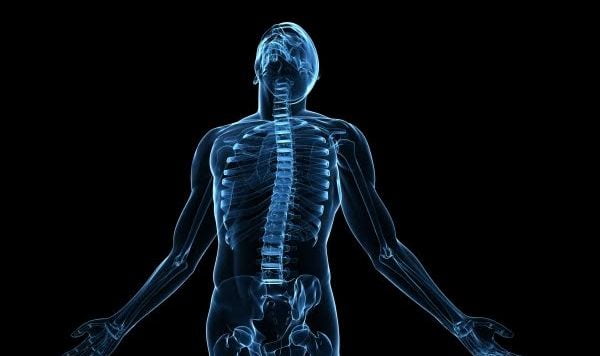At a young age, British researcher Phil Teare lost his wife to cervical cancer. Left to raise their daughter alone and for her sake, he decided to dedicate his life and career to detecting cancer at earlier stages. Teare taught himself machine learning in order to recruit machines to fight diseases.
“I was told then by my wife’s oncologist that there was a ‘catch 22’ for women her young age,” Teare told NoCamels. “That for someone her age, invasive diagnostic procedures, while having a low chance of mortality, were still too high a risk when compared to the very low likelihood of her symptoms being those of cancer. And so the common practice was to assume it was not, and wait. But wait too long and it could be real, and spread. As it so tragically did.”
This led Teare to join the team at Zebra Medical Vision, an Israeli deep learning imaging analytics company, which battles breast cancer and other life-threatening diseases. The company has just announced the development of a new software algorithm using machine and deep learning for detecting breast cancer. The algorithm provides superior results compared to current tools, reducing misdiagnosis and false alarms.
Breast cancer is the most common cancer among American women, second only to skin cancers. About 1 in 8 women in the US will develop invasive breast cancer during their lifetime. As early detection is key to fighting breast cancer, women over 45 are advised to have a mammogram screening every two years. Approximately 10 percent of tests are sent for further evaluation due to suspicious findings, and approximately 5 women out of every 1,000 will develop breast cancer. Unfortunately, one of those 5 will be missed, and discovered too late. Furthermore, most women who are sent for biopsy follow ups turn out to be healthy – subjecting them to unnecessary tests and mental anguish.
Automatic diagnosis
Unlike other companies, Zebra’s algorithms provide an actual diagnosis, completely automatically using only imaging data. This is a very new field – older technology was always driven by the radiologist, and never automatic. The algorithms are part of the Zebra Analytics Platform – a cloud based analytics engine that receives medical imaging studies, analyzes them and returns results to participating hospitals and physicians.
Reducing false negatives & positives
Zebra’s new algorithm helps provide better outcomes in two keys ways by reducing both false negatives and false positives. Less false negatives results in accurately detecting women with cancer, and fewer false positives means women will not have to undergo unnecessary tests and stressful procedures. According to the company, Zebra’s solution uses this technology to cut down the 20 percent of undetected breast cancer cases by more than half.
Sign up for our free weekly newsletter
SubscribeZebra Medical Vision developed their mammography algorithm using thousands of patient studies, and utilizing innovative deep learning techniques. Presenting the company’s results at the recent SIIM Conference on Machine Intelligence in Medical Imaging (CMIMI), Dr. Elnekave, Zebra’s Chief Medical Officer, showcased algorithm results superior to those achieved by radiologists using current state of the art Computer Aided Detection methods for mammography.
SEE ALSO: Researchers Find Promising Therapy For ‘Treatment-Resistant’ Breast Cancer
“As a mammographer, I am cognizant of the vast variations in which breast cancer can manifest on a mammogram. Some of the most challenging cancer diagnoses are ones where the visual cues are not distinct lesions but rather regional asymmetry or architectural distortion in the breast tissue. I welcome Zebra Medical Vision’s algorithm that is a new generation of mammography analysis, which can help us in the mission of finding even the most subtle cancers as early as possible,” Dr. Maya Cohen, Director of the imaging Institute at Rabin Medical Center and Director of the Breast Health Center at Herzeliya Medical Center, said in a statement.
Tools for radiologists
The mammography algorithm will be added to the company’s growing list of clinical algorithms which are part of an analytics engine that uses machine and deep learning to automatically read and diagnose medical imaging data. The Zebra engine has already yielded imaging insights that have been validated using hundreds of thousands of cases. Current algorithms are in the fields of bone health, cardiovascular analysis, liver and lung indications, and now mammography.
“We teach software to read and identify clinical conditions in imaging as part of our mission to help provide faster, more accurate radiology services at lower cost,” Elad Benjamin, Zebra Medical Vision’s CEO, said in a statement. “We use machine and deep learning to help diagnose diseases responsible for the highest mortality rates, and breast cancer is one of the top on that list. We believe that the tool we’re providing to radiologists, as well as new algorithms which we continuously release, will help them deal with the continuous pressure they face to increase output and maintain high quality of care.”
Headquartered in Kibbutz Shefayim in central Israel, the Company was founded in 2014 by Eyal Toledano, Eyal Gura, and Elad Benjamin. Funded by OurCrowd, Marc Benioff, Khosla Ventures, and the Intermountain Healthcare innovation fund, the company has raised $20 million to date. On track to create one hundred new insights in the next three years, Zebra has already secured partnerships with Dell Services and has received financial backing from Intermountain Healthcare, one of the leading healthcare organizations in the US. Zebra continues to expand its relationships and work with ACOs, HMOs and other providers seeking to improve care at lower cost through the power of analytics, predictive modeling and preventative care.
Photos: Zebra Medical Vision
Related posts

Israeli Medical Technologies That Could Change The World

Harnessing Our Own Bodies For Side Effect-Free Weight Loss

Missing Protein Could Unlock Treatment For Aggressive Lung Cancer







Facebook comments